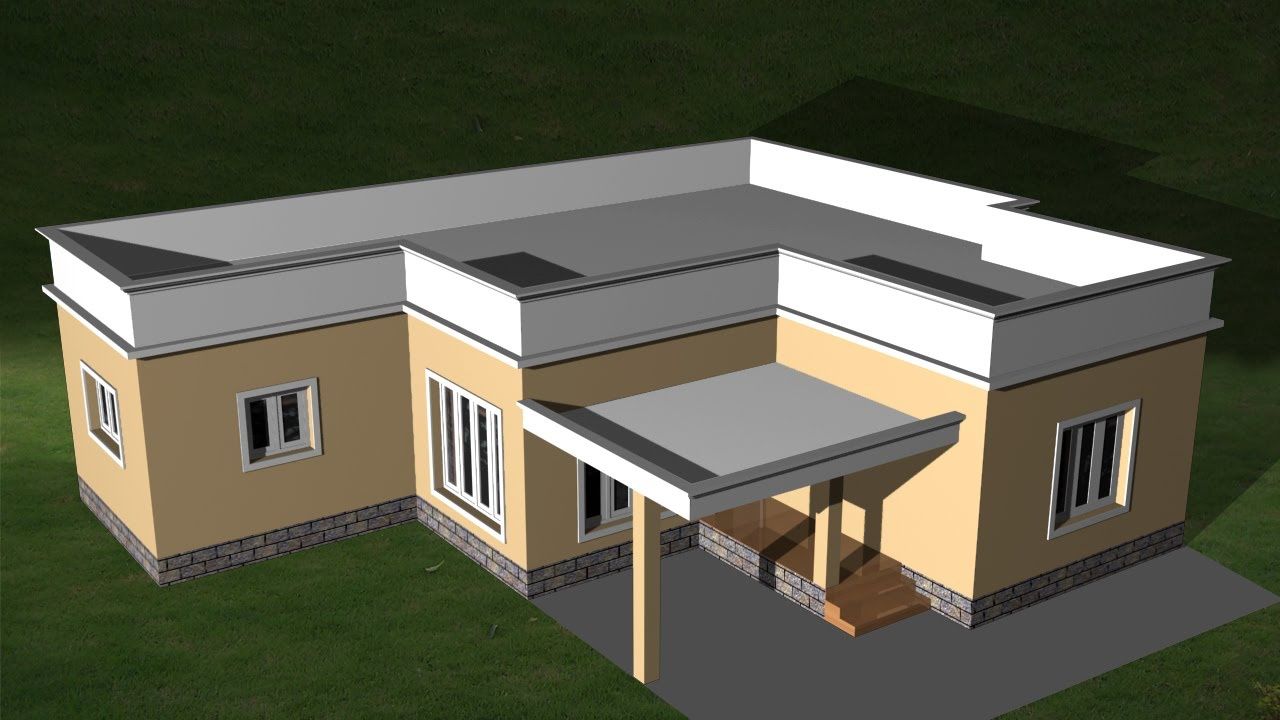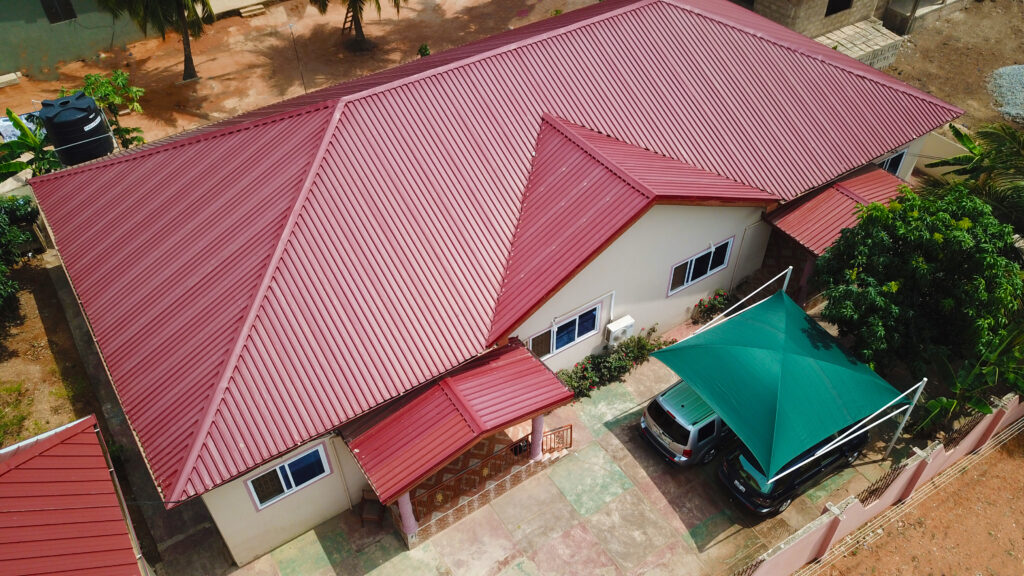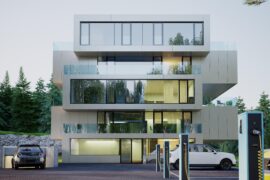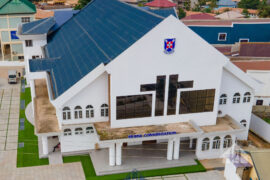Imagine you’re driving down a dark and winding road, relying solely on your car’s headlights to guide you. Suddenly, a thick fog rolls in, obscuring your vision and making it nearly impossible to see what lies ahead. In that moment, you realize the importance of having a clear view of your surroundings. The same principle applies to your project’s roof. While a hidden roof may seem like a sleek and modern choice, there are five compelling reasons why it may not be the best option for your project. From limited design flexibility to increased risk of leaks, each of these reasons will shed light on why you should carefully consider your roofing options before making a decision.
Limited Design Flexibility
Hidden roofs may not be the best choice for your project due to their limited design flexibility. When opting for a hidden roof, you must consider the limited installation options it offers. Unlike other roofing systems, hidden roofs are typically restricted to specific types of structures and may not be suitable for all architectural designs. This can significantly limit your options when it comes to finding a roof that complements the overall aesthetic of your project.
Furthermore, hidden roofs can have a negative impact on natural lighting within the building. The design of hidden roofs often involves concealing the roof structure, which can result in decreased natural lighting. This is particularly problematic if your project requires ample natural light, such as in commercial spaces or residential buildings. The reduced natural lighting can make the interior feel darker and may require additional artificial lighting to compensate, resulting in increased energy consumption and costs.
It is important to carefully consider these limitations before deciding on a hidden roof for your project. While they may offer certain advantages, such as a seamless appearance and enhanced weather protection, the limited design flexibility and decreased natural lighting should be taken into account to ensure the overall success of your project.
Higher Maintenance Costs
Maintenance costs for hidden roofs tend to be higher compared to other roofing systems. While hidden roofs offer a sleek and modern appearance, they require more attention and upkeep to ensure their longevity. Here are some reasons why hidden roofs can lead to higher maintenance costs:
Complex Installation: The installation process for hidden roofs is more intricate and time-consuming compared to traditional roofing systems. This complexity can result in higher installation costs, as specialized labor and materials may be required.
Limited Access: Hidden roofs are designed to be concealed, making it difficult to access and inspect the underlying structure. Any repairs or maintenance work may require additional time and effort, leading to increased costs.
Longer Lifespan: While hidden roofs generally have a longer lifespan compared to other roofing systems, they still require regular maintenance to ensure their durability. This includes routine inspections, cleaning, and repairs to prevent any potential leaks or damages.
It is important to consider these factors when deciding on a roofing system for your project. While hidden roofs may offer aesthetic appeal, the higher maintenance costs associated with them should be taken into account.
Increased Risk of Leaks
One potential drawback of hidden roofs is the increased risk of leaks. This type of roof design, where the roofing materials are concealed beneath another layer, can make it difficult to identify and address leaks in a timely manner. The hidden nature of the roof can lead to water infiltration, which may go unnoticed until significant damage has already occurred.
The increased risk of leaks can result in a higher potential for structural damage. If water seeps through the hidden roof, it can penetrate the underlying structure, leading to rot, corrosion, and weakening of the building materials. Over time, this can compromise the structural integrity of the entire roof system and pose a safety hazard.
Another concern related to hidden roofs is the potential for mold growth. When water leaks into the concealed space, it creates a damp environment that is conducive to mold formation. Mold not only damages the roof structure but also poses health risks to occupants, particularly those with respiratory conditions or allergies.
To mitigate the increased risk of leaks, regular roof inspections and maintenance are crucial. However, the hidden nature of the roof makes it more challenging to identify and address potential issues. Therefore, it is essential to engage the services of experienced roofing professionals who are familiar with hidden roof systems to ensure timely detection and repair of any leaks.
Difficulty With Insulation and Ventilation
To properly address the challenges associated with hidden roofs, it is important to consider the difficulty that arises when it comes to insulation and ventilation. Hidden roofs pose unique challenges for insulation, as they are often constructed with limited space for insulation materials. This can result in compromised thermal efficiency and increased energy consumption. Additionally, the design of hidden roofs can make it difficult to achieve proper ventilation. Without adequate airflow, moisture can accumulate within the roof structure, leading to issues such as mold and rot.
Here are some key challenges related to insulation and ventilation in hidden roofs:
- Limited space for insulation materials, resulting in compromised thermal efficiency.
- Difficulty in achieving proper ventilation, leading to moisture accumulation and potential problems like mold and rot.
- Increased energy consumption due to inadequate insulation.
Addressing these challenges requires careful planning and consideration of alternative insulation and ventilation methods. It may be necessary to explore innovative solutions, such as using thinner insulation materials with higher thermal performance or integrating mechanical ventilation systems. Consulting with experts in roofing and building science can help ensure that insulation and ventilation issues are effectively addressed in hidden roof projects.
Limited Accessibility for Repairs and Upgrades
Limited accessibility for repairs and upgrades can pose significant challenges in hidden roof projects. While hidden roofs offer a sleek and seamless appearance, their design can make it difficult to access and maintain the roofing system. This limited accessibility can result in increased costs and time-consuming repairs.
One of the main issues with hidden roofs is their limited durability. Since the roof structure is concealed, identifying and addressing any issues becomes a complex task. Repairs often require extensive dismantling and reconstruction, which can be both expensive and time-consuming. Additionally, the lack of accessibility makes it challenging to conduct regular inspections and preventive maintenance, further compromising the roof’s longevity.
Another drawback of hidden roofs is their impact on the aesthetic appeal. While they provide a clean and modern look, any repairs or upgrades can disrupt the seamless appearance. The process of accessing the roof can damage the surrounding materials, requiring additional repairs to restore the original aesthetic. This can be particularly problematic for buildings that prioritize visual appeal, such as commercial or residential properties.
Frequently Asked Questions
How Can Hidden Roofs Limit the Design Flexibility of a Project?
Hidden roofs can limit the design flexibility of your project due to design limitations and construction challenges. These roofs may restrict the ability to incorporate unique architectural elements or complex roof structures. The construction process can also be more complicated and costly, requiring specialized techniques and materials. Additionally, hidden roofs may have limited ventilation options and can be more prone to leaks and maintenance issues. Considering these factors, it is important to carefully weigh the benefits and drawbacks before opting for a hidden roof.
What Are Some Examples of Higher Maintenance Costs Associated With Hidden Roofs?
Hidden roofs can come with higher maintenance costs and several disadvantages. For instance, due to the hidden nature of the roof, it can be more challenging to detect and repair leaks or damage, leading to increased maintenance expenses. Additionally, the complexity of the hidden roof design can make it harder to access for routine inspections and maintenance tasks. These factors contribute to the overall higher maintenance costs associated with hidden roofs.
How Does an Increased Risk of Leaks Affect the Overall Durability of Hidden Roofs?
An increased risk of leaks can significantly impact the overall durability of hidden roofs. With hidden roofs, it becomes more challenging to detect and repair leaks, leading to potential water damage and structural issues. This increased maintenance can be costly and time-consuming, affecting the long-term sustainability of the project. Regular inspections and maintenance are crucial to ensure the hidden roof’s integrity and prevent further damage.
What Challenges Are Faced When It Comes to Insulation and Ventilation in Hidden Roofs?
When it comes to hidden roofs, you may face challenges with insulation and ventilation. Insulation can be difficult to install properly, leading to potential heat loss or cold spots in your project. Ventilation issues can arise due to the lack of natural airflow in hidden roofs, which can result in poor air quality and stagnant air. These challenges should be considered before deciding if a hidden roof is the best choice for your project.
In What Ways Does Limited Accessibility for Repairs and Upgrades Impact the Longevity of Hidden Roofs?
Limited accessibility for repairs and upgrades can significantly impact the longevity of hidden roofs. Without easy access to the roof, it becomes difficult and time-consuming to address any repairs or upgrades that may be needed. This can result in delays and increased costs for maintenance work. Additionally, limited accessibility can also make it challenging to properly inspect the roof and identify potential issues before they become major problems. Therefore, it is important to consider the implications of repair and upgrade accessibility when deciding on the best roofing option for your project.
Conclusion
In conclusion, hidden roofs may not be the best choice for your project due to limited design flexibility, higher maintenance costs, increased risk of leaks, difficulties with insulation and ventilation, and limited accessibility for repairs and upgrades. It is important to carefully consider these factors before making a decision.
Discover more from Ghana Scoop
Subscribe to get the latest posts sent to your email.






1 Comment
Hi Mawunyo, greetings from a copywriter. As my name suggests, I am Dominic, a professional sales copy and content writer based in the Volta. Just a few minutes into your content and I have already found great value… kudos! Yet more, I would like to get in touch with you so I can bring my copywriting skills to bear and improve your write ups and strategically drive traffic as well to your site. I noticed a few things that need improvement– like clarity and consistency of flow. It would be mutually beneficial if you get in touch so we curate future contents.
Best Regards